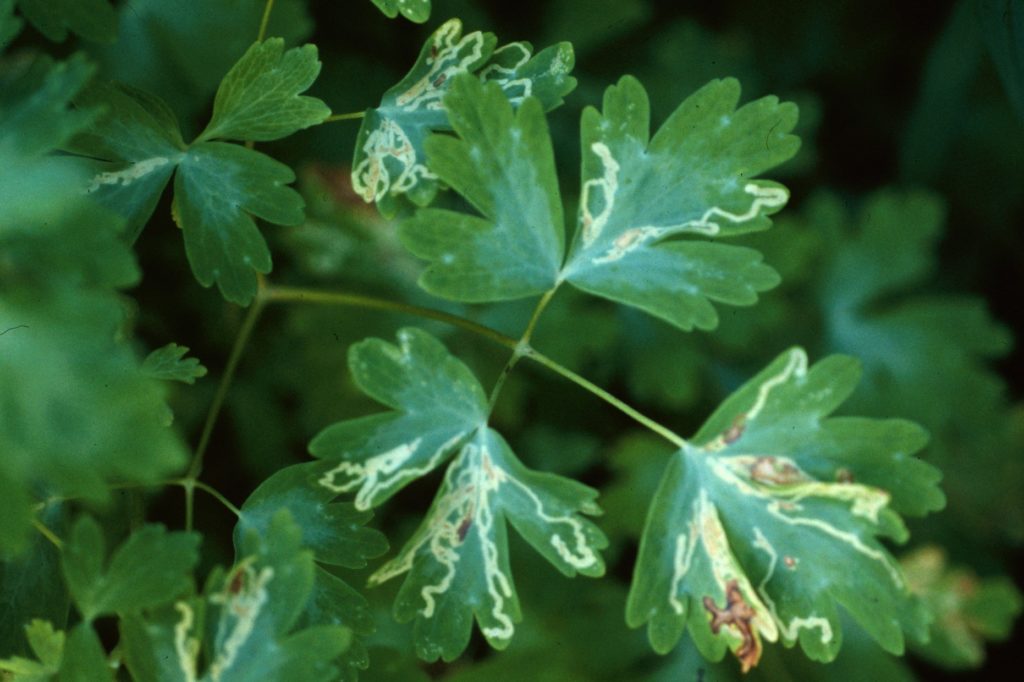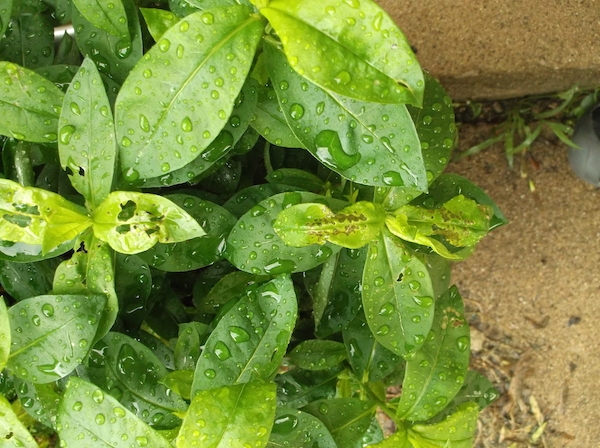
Rose slug and damage. Photo courtesy Missouri Botanical Garden.
There seems to be a lot to be on the lookout for this spring.
For instance, I noticed finches sitting on the branches of the ‘Goldflame’ honeysuckle vine, pecking at the flower buds. A closer inspection revealed aphids on the buds, so I’m assuming (hoping?) the birds were eating the bugs. Aphids frequently are drawn to tender new growth and the recent rains have promoted that.
My native columbines (Aquilegia canadensis) have lost all of their leaves. More accurately, the caterpillar stage of the wasp-like columbine sawfly has been devouring them. Fortunately this is an aesthetic problem and not likely to kill the plant, unless an infestation occurs several years in a row. The native columbine is supposed to be more resistant to the sawfly’s green caterpillar, so I’m hoping this is just a fluky occurrence.

Tiny bugs called leaf miners make track in the leaves of columbine.
Columbines are susceptible to leaf miner damage, too. The culprit is the larval stage of a native fly. Tiny caterpillars leave telltale tracks in the leaves as they eat their way through the layers of green tissue.
Another kind of sawfly caterpillar, commonly referred to as the rose slug, makes holes in the plant’s leaves. The green caterpillars chew holes on the undersides of rose (Rosa) leaves, usually only in the morning.
My phlox, salvia and a few other perennials show damage from what’s commonly called a plant bug. As generic as that sounds, there are a few insects that do this type of damage, but it likely is the one-fourth inch long tarnished plant bug. It makes tiny brownish or brown-black holes in the leaves or flower buds.

A plant bug has been taking bites out of the leaves of phlox (pictured), salvia and a few other perennials. (C) Jo Ellen Meyers Sharp
Again, the damage from leaf miners, rose slug and plant bug is more aesthetic than deadly. The first line of defense is a strong spray of water from the end of the garden hose to knock the unwanted critters from the plants. Be sure to spray water on the undersides of the leaves, too. Do it every few weeks until you have the problem under control.